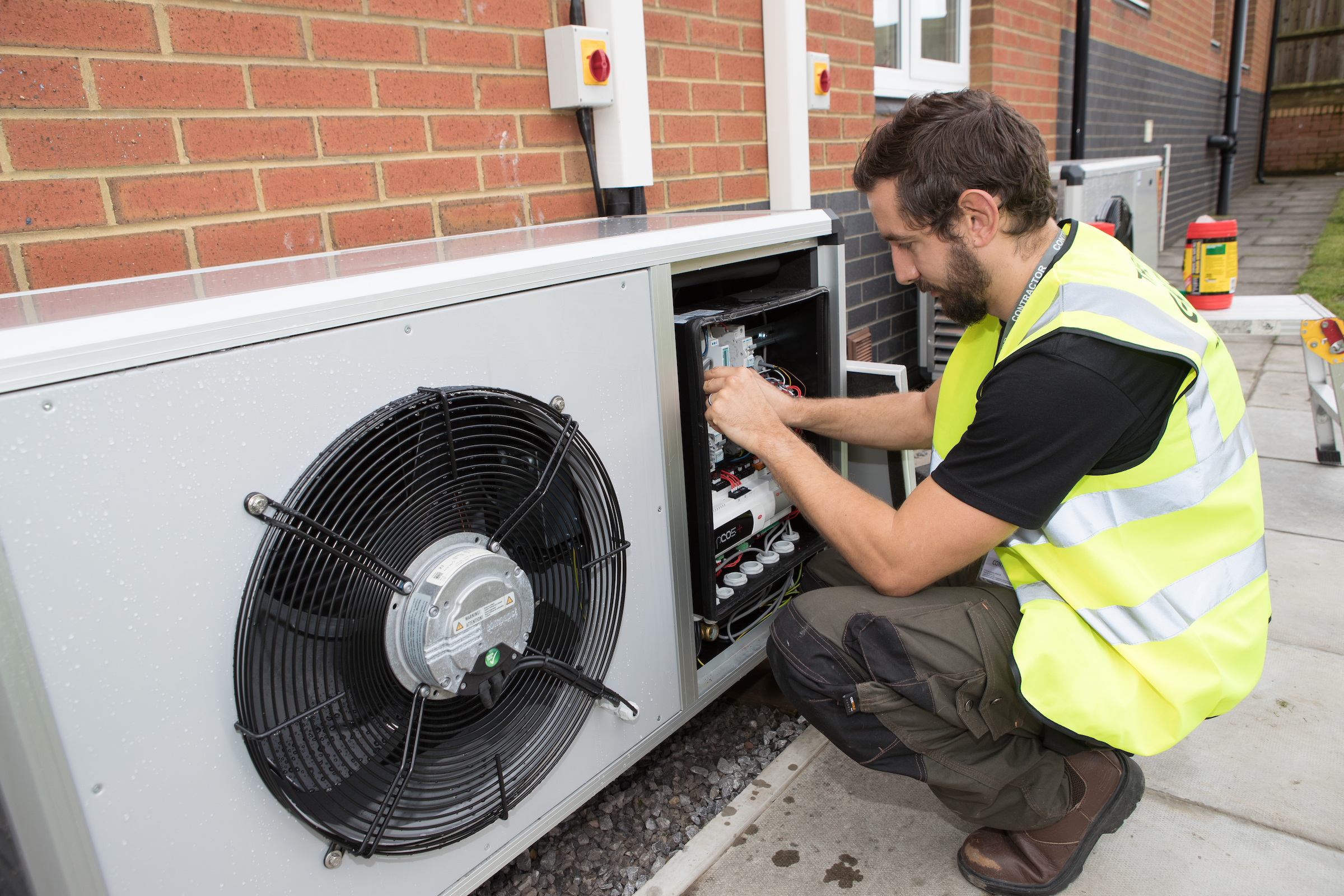
The low-carbon heating challenge: should builders and developers focus on smarter controls? Will Heinzelmann, product director at Passiv UK, attempts to answer the question.
The UK will have to decarbonise domestic heating to meet its 2050 net zero targets. Since those targets were first enshrined in law, heating has been the elephant in the room of the ‘big three’ areas for decarbonisation – power, transport, and heating. The transition to low-carbon power has been rapid, with emissions from electricity generation falling by more than 60% since 1990. Transport is also well on its way, with the millionth electric vehicle having been registered in January. Decarbonisation of heating, however, has been sluggish at best.
After reviewing various options for low-carbon heat, it looks like the Government is set on heat pumps as the main solution, whether installed individually outside homes or as part of larger, centralised heat networks. That’s a good thing and the right decision but decarbonisation with heat pumps depends on two things: they have to run efficiently, and they need to consume low-carbon electricity.
An efficient heat pump is one with a good Coefficient of Performance (CoP). Heat pumps are typically very efficient. A new gas boiler will have an efficiency of 85% if it’s set up correctly but a heat pump can have an efficiency of well over 300%. No, that’s not breaking the laws of physics – as that’s because a heat pump extracts ‘free’ energy from an external source, usually from the air or ground outside the home.
The efficiency of a heat pump is determined by the flow temperature, which is the temperature of the water that flows from the heat pump into the radiators within a home. A lower flow temperature means a higher CoP and it’s the heat pump or its controls that determines this flow temperature.
A third of heat pumps are still installed and commissioned to operate at a fixed flow temperature. That’s easy for an installer, but a disaster for a heat pump’s efficiency. The other two-thirds use a weather compensation curve, which are the settings the installer puts in the heat pump that tell it what flow temperature to produce for a given outdoor temperature. The idea is that the colder it is outside, the hotter a home’s radiators need to be to keep it warm.
This is great for the efficiency of a heat pump if the installer gets the settings exactly right, which they won’t because it’s an impossible thing to do. They calculate the weather compensation curve at the point of installation using the best information that they have. Probably a heat loss calculation they have produced for the home.
But that weather compensation curve doesn’t change if they get it wrong and it doesn’t adjust to new information. Nor can it look at weather forecasts or factor in how the homeowner uses their heating system. So, it’s better than using a fixed flow temperature, but we can do better.
That’s where smart controls come in. The latest generation of smart controls have been designed to work with a heat pump and can remove the need for an installer to set a weather compensation curve. Instead, from the moment they are installed, they learn how a home heats up and cools down and how the heating system behaves.
Then, they use local weather forecasts to calculate the optimal way to meet a homeowner’s comfort requirements, continuously optimising the heat pump’s flow temperature to maximise its CoP. The outcome is a dynamic weather compensation curve, and one that is always, exactly right.
Alongside efficient operation, heat pumps depend on a low-carbon electricity source for effective decarbonisation. Our electricity grid will continue to decarbonise, but as we become increasingly reliant on renewable sources of energy, the carbon intensity of the electricity we consume will vary massively throughout the day.
There will be times when it is very windy or sunny and the grid will be very green. But there will also be times when it is very still, cold, and dark and homeowners want to heat their houses or charge their electric vehicles at the same time. It is likely that this demand will still be met by a significant proportion of fossil fuel generation and that means that while across the year our power may be greener, it may not be when a homeowner needs to turn on their heat pump!
Here again, smart controls have a role to play. In the last few years, there has been great innovation in electricity tariffs that has seen ‘time of use tariffs’ incentivising us to use electricity at different times of the day. These types of tariffs have rates that vary every single half-hour and are only announced 24 hours in advance.
Typically, high prices correlate with high carbon emissions, so rates are higher at peak times in the evening, when the grid is at its dirtiest. In theory, homeowners could manually control their heat pump to take advantage of these price swings. But then they wouldn’t leave the house much.
Instead, smarter controls can automatically adjust a home’s heat pump according to the rates offered by a time-of-use tariff. Some of these controls can adjust a heat pump’s operation to maximise the consumption of cheap, low-carbon electricity by preheating a home and storing warmth in the fabric of the building. At peak times, the heat pump then doesn’t have to work as hard, saving money and the planet.
It’s good that the Government seems to have recognised the need to tackle the elephant in the room, but maybe they’ve picked the wrong elephant. Most of the heat pumps you can buy seem similar. Perhaps it’s the controls that can make the big difference.



